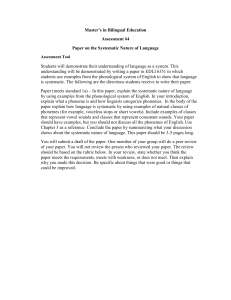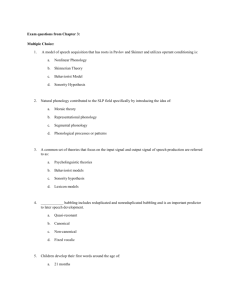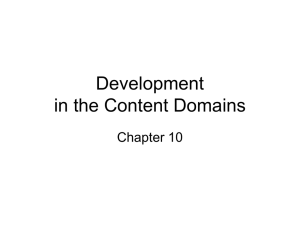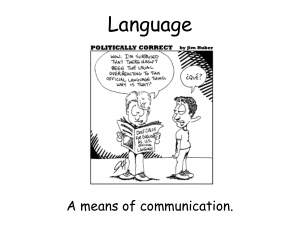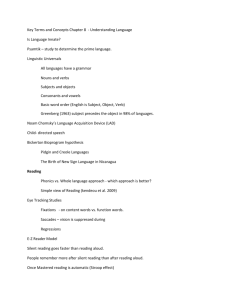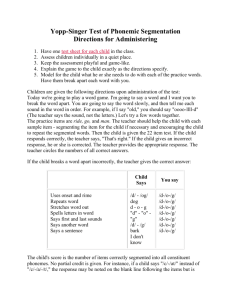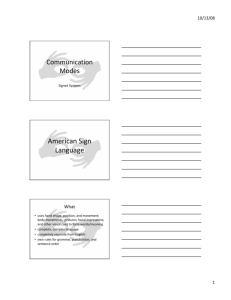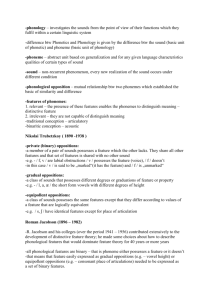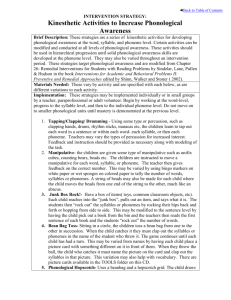Case study for What Works
advertisement
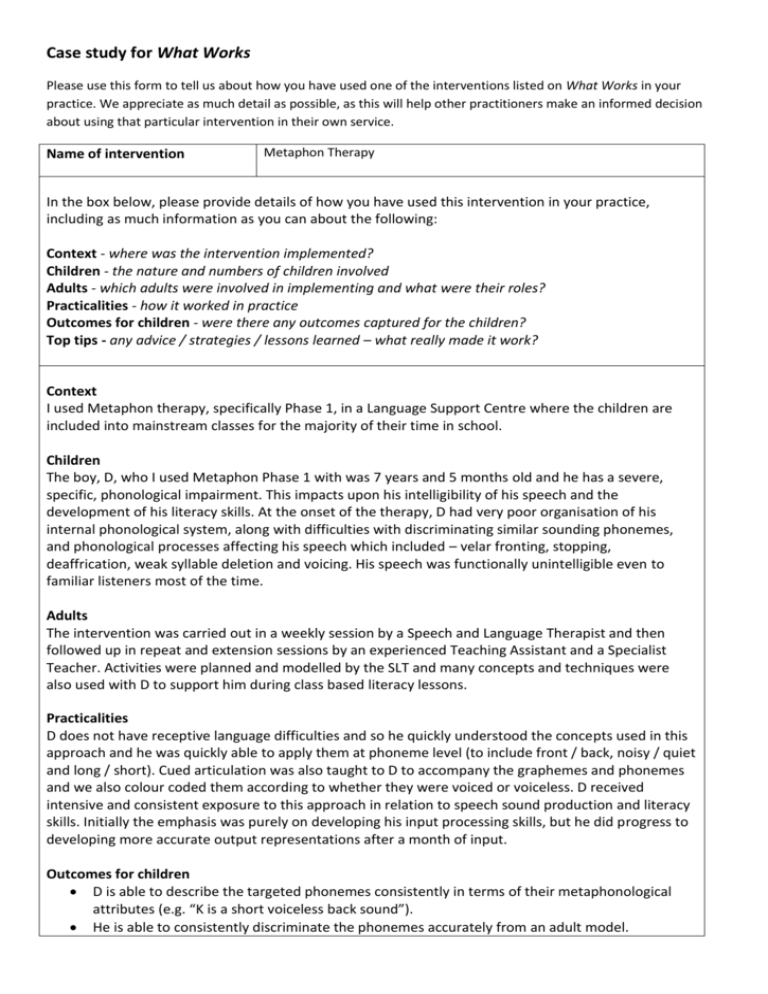
Case study for What Works Please use this form to tell us about how you have used one of the interventions listed on What Works in your practice. We appreciate as much detail as possible, as this will help other practitioners make an informed decision about using that particular intervention in their own service. Name of intervention Metaphon Therapy In the box below, please provide details of how you have used this intervention in your practice, including as much information as you can about the following: Context - where was the intervention implemented? Children - the nature and numbers of children involved Adults - which adults were involved in implementing and what were their roles? Practicalities - how it worked in practice Outcomes for children - were there any outcomes captured for the children? Top tips - any advice / strategies / lessons learned – what really made it work? Context I used Metaphon therapy, specifically Phase 1, in a Language Support Centre where the children are included into mainstream classes for the majority of their time in school. Children The boy, D, who I used Metaphon Phase 1 with was 7 years and 5 months old and he has a severe, specific, phonological impairment. This impacts upon his intelligibility of his speech and the development of his literacy skills. At the onset of the therapy, D had very poor organisation of his internal phonological system, along with difficulties with discriminating similar sounding phonemes, and phonological processes affecting his speech which included – velar fronting, stopping, deaffrication, weak syllable deletion and voicing. His speech was functionally unintelligible even to familiar listeners most of the time. Adults The intervention was carried out in a weekly session by a Speech and Language Therapist and then followed up in repeat and extension sessions by an experienced Teaching Assistant and a Specialist Teacher. Activities were planned and modelled by the SLT and many concepts and techniques were also used with D to support him during class based literacy lessons. Practicalities D does not have receptive language difficulties and so he quickly understood the concepts used in this approach and he was quickly able to apply them at phoneme level (to include front / back, noisy / quiet and long / short). Cued articulation was also taught to D to accompany the graphemes and phonemes and we also colour coded them according to whether they were voiced or voiceless. D received intensive and consistent exposure to this approach in relation to speech sound production and literacy skills. Initially the emphasis was purely on developing his input processing skills, but he did progress to developing more accurate output representations after a month of input. Outcomes for children D is able to describe the targeted phonemes consistently in terms of their metaphonological attributes (e.g. “K is a short voiceless back sound”). He is able to consistently discriminate the phonemes accurately from an adult model. D demonstrates improved internal phonological representations through discriminating phonemes correctly using nonsense words. D’s discrimination of voiced and voiceless plosives is not yet consistent at word level. D’s phonological decoding of real and nonsense cvc words is significantly improved, and his early reading skills are emerging now. D now has much improved awareness of how to make his speech intelligible in therapy tasks and when reading aloud from his early stage reading scheme books. D’s functional intelligibility in his every day spontaneous speech remains poor, especially out of context and with unfamiliar listeners. He now needs to progress with Phase 2 of Metaphon to facilitate the generalisation of his acquired phonological awareness skills and improve his speech clarity in wider contexts. Top tips This approach worked well due to the experience and expertise of the child’s teaching assistant and the consistency of the approach. Visual cue cards were used to prompt D about the concepts linked to the phonemes and this along with Cued Articulation made it multi-sensory learning, however, this could easily be overload for many children. Weekly liaison between the SLT and school staff enabled the therapy to be adapted quickly and updated as D progressed. The SLT service has a bank of Metaphon resources which are easily accessible and this made it possible to work on each concept and the contrasting phonemes quickly and using a variety of activities.

